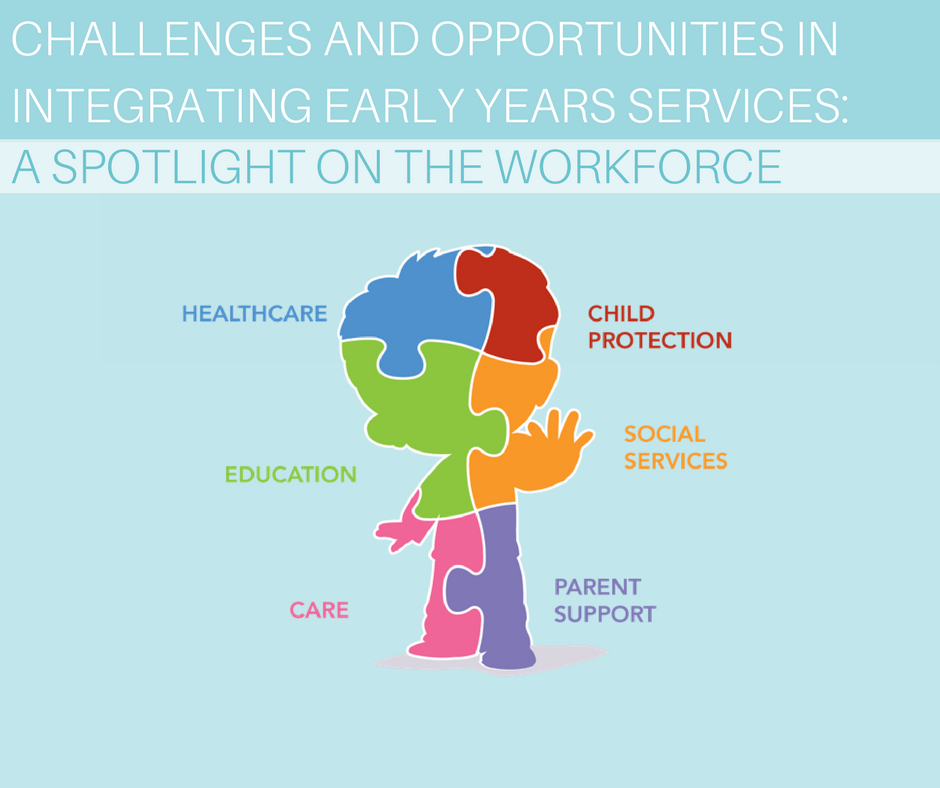This blog was originally posted on the Center for the Study of Child Care Employment website on May 7, 2018.
By: Caitlin Mclean
Why we need to know more about the early childhood workforce
This is an exciting time in early childhood education. Given early educators’ critical role in children’s early learning and development, experts are urging significant policy shifts and substantial new investments to revamp how teachers, leaders, and other professionals working with young children are prepared, supported, and compensated. These changes signal a growing understanding that the well-being and skill of this workforce is key to children’s learning.
But there’s a big obstacle in the way. The field can’t shape policy decisions or allocate resources effectively without first being able to answer basic questions about the early childhood workforce — its size and key characteristics across settings, for example.
The field can’t confidently answer these questions because data on this workforce have not been consistently or systematically collected. We know, for example, that early childhood educators benefit greatly from a deep understanding of child development — this is one reason for the emerging consensus on higher education credentials for this group of educators. And yet, if a policymaker wants to know how many members of the current workforce need additional education and how much education, this information is not available in many places. We would not be able to answer.
Here are a few other questions that we can’t answer with confidence across states:
- How many early educators are there in different settings?
- What percentage participate in professional development?
- How many lead teachers have bachelor’s degrees? Associate degrees?
- How many teachers need educational support to achieve higher qualifications?
- How does level of education vary according to the racial/ethnic characteristics of the
workforce? - How many early educators earn $15 per hour or more?
Without good data, we’re essentially guessing. A dearth of data reinforces the status quo. Without data, anecdote — and even bias — drives policy decisions. Without data, resources could be misdirected to communities that do not need them and away from communities that do. Without data, we risk repeating the same mistakes because we don’t know how effective a program or policy is.
Solution: Invest in Better Data
So what would a good early care and education workforce data system look like? Our new brief offers details. In a nutshell, a high-quality data collection would have five qualities.
5 Features Every Data Set Should Have
- Data should be collected regularly.
- Data should be comparable across regions, states, and localities.
- Data sets should be standardized, so data on individuals can be linked to data on
services, programs, and outcomes for children and families. - Data sets should be periodically supplemented to answer new or more detailed
policy questions as they arise. - Data sets should be transparent and accessible to the wider public.
When building a database or conducting a survey, these four questions should be considered.
4 Questions to Ask When Building a Database or Conducting a Survey
- Can the data be used to estimate the size and key characteristics of the workforce?
- Do the data accurately and reliably describe the population under study? If the data
are derived from a sample rather than a census, are they representative of the
wider population? - Are the data sufficiently detailed to provide answers to more complex or in-depth
policy or research questions? - Can the data identify trends over time? Is it possible to track the characteristics of
the same teachers/providers over time, for example?
Many states have early educator workforce registries or surveys. While these resources are a good start, many registries and surveys currently cannot answer the above four questions, in part because they have not been steadily funded. Without sufficient resources, progress toward realizing the potential of either registries or surveys will likely be halting and incomplete.
5 Steps State and Local Leaders Can Take to Strengthen Data
State and local leaders should continue to develop and strengthen workforce data systems,
starting with the following five steps.
- Take stock of your data; identify members of the workforce and programs not included.
- Establish the basic and in-depth questions you can and cannot answer about the
workforce. - Identify potential funding sources — such as the Child Care Development Block Grant —
and design advocacy strategies for funding workforce data collection, management, and
analysis. - Ensure that workforce data are part of early childhood governance structures and
support the integration of workforce data systems with broader early childhood data. - Help spearhead a federal advocacy effort for better workforce data. Federal leaders
should continue to encourage and assist states in developing data systems that track
early care and education workforce composition and characteristics over time.
In the end, access to better data is not simply a “wish-list” item. It is critical to the field. With improved data, we can begin to answer fundamental questions and use that information to better inform policies, build the workforce, and ensure our children are being given every advantage they deserve.
For more, see, “The Workforce Data Deficit Who It Harms and How It Can Be Overcome,” by Marcy Whitebook, Ph.D., Caitlin McLean, Ph.D., and Lea J.E. Austin, Ed.D.
You can find this blog on the Center for the Study of Child Care Employment at UC Berkeley website here.
Did you find this interesting? Sign-up for our newsletter to receive updates about new resources and join the conversation about the early childhood workforce on Twitter.




